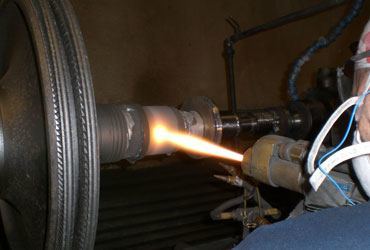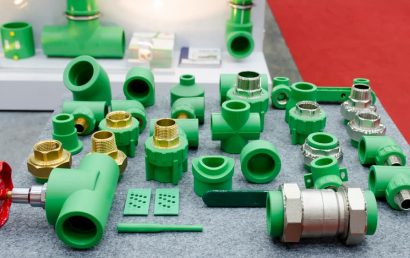How Does A&A Coatings Handle Industrial Gases In Thermal Spray Processes?
Involved in the process of thermal spray coating – at incredibly high velocities – is the deposit of materials onto a substrate. Aerospace components, medical devices, sporting goods, and more can all make good use of coatings applied through thermal processes.
Industrial gases in thermal spray processes – helium, argon, nitrogen, oxygen, and hydrogen – drive the process of coating. The gases are used for inerting or combustion. In either gaseous or liquid form, each gas has special properties. The key to using these gases safely is understanding their storage, properties, maintenance, and application equipment according to industry standards.
Storage And Hazards
As cryogenic liquids, bulk argon, nitrogen, hydrogen, and oxygen are stored at thermal spray facilities. At around -423°C, these storage conditions are extremely cold. So cold, in fact, that if exposed skin comes into contact with an uninsulated pipe carrying the above stated cryogenic liquids, or if the liquid itself comes into contact with skin, severe low temperature burns can result. In thermal spray operations, safety hazards are posed by high pressures, asphyxiants, flammable gases, and extreme cold or hot temperatures.
Inert Gases – Helium, Argon, and Nitrogen
At pressures as high as 2000 pounds per square inch, inert gases leave thermal spray guns and may be supplied as bulk liquid. Bulk liquid supply systems, at their simplest, consist of ambient air vaporizers, vacuum jacket insulated liquid storage tanks, and a pressure regulating manifold. The latter is used to regulate the final gas line pressure delivered to the spray booths.
In conjunction with ASME storage vessels, a pump may be used by some thermal spray companies, depending on pressure requirements.
Oxygen
When using oxygen, the following foundational safety measures must be considered (and are considered at A&A Coatings):
- Knowledge of the emergency shut off device’s location so that, in the event of a fire, oxygen flow can be stopped.
- Flowing oxygen should not be stopped suddenly if at all possible. This could ignite the oxygen.
- So as not to cause a fire, avoid possible sources of heat and ignition. Details are crucial. Pay attention!
- When changing flow requirements or selecting flow requirements involving carbon steel pipe, consider gas velocities.
Hydrogen
When using hydrogen, the following foundational safety measures should be considered (and, once again, are considered at A&A Coatings):
- Before working on process piping containing flammable gases such as hydrogen, purge the inert gas.
- In protected locations, install all overhead piping. Check for leaks upon installation and label and pressure test the piping.
- In accordance with ASME, select and install hydrogen process piping.
- Chances are, before you see a hydrogen fire, you will hear it. Therefore, be sure to be aware of emergency shut off valve locations outside and inside a plant. Additionally, if you suspect a leak, know how to respond.
- Because it has a tendency to build static charge, synthetic clothing should not be worn.
- Including static dissipative safety shoes and long-sleeved fire-retardant clothing, proper PPE should be worn.
- Electronic devices such as cell phones should be kept away from a hydrogen supply.
Count on A&A Coatings for Safety
At A&A Coatings, all of our technicians are well-versed in ensuring the safety of all concerned throughout the entire process of thermal spray. We use the latest technology, components, coatings, and more to stay updated and current. Our R&D Department is constantly working to see to it that we are up-to-date and at the head of our industry.
Contact one of our knowledgeable service representatives today if you’d like to find out more about thermal spray coatings, safety measures, and/or which coating best suits the needs of your business and industry.




